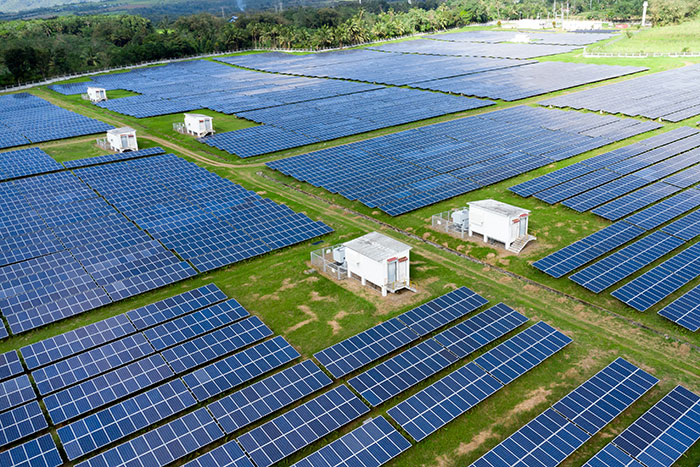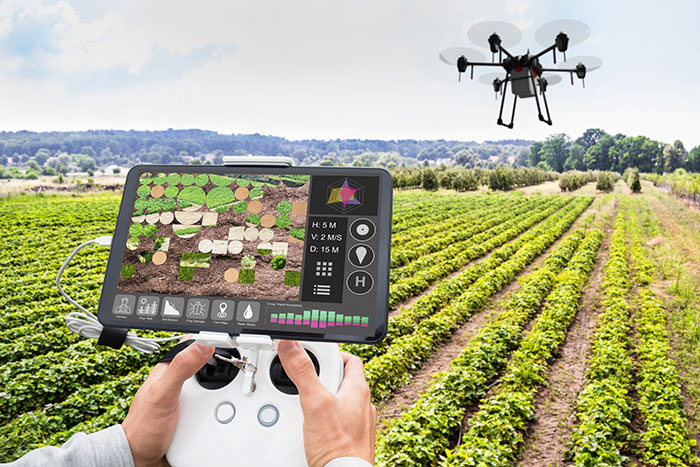Exciting Innovations and Opportunities in Environmental Science
The field of environmental science is rapidly evolving, driven by cutting-edge technology and innovative approaches to sustainability. As we delve into these exciting developments, we uncover a range of opportunities that are transforming career landscapes for aspiring students and established professionals alike. Explore the latest advancements and learn how they are not only addressing environmental challenges but also opening new avenues for professional growth and impact in the world of environmental science.
Environmental Monitoring with AI and Machine Learning
Artificial Intelligence (AI) and Machine Learning (ML) are revolutionizing environmental monitoring by providing advanced predictive capabilities and real-time data analysis. These technologies enable scientists to model complex environmental systems, predict pollution patterns, and identify areas at risk with unprecedented accuracy.
AI algorithms can process vast datasets from satellite imagery, sensors, and historical records to track changes in biodiversity, water quality, and atmospheric conditions. Microsoft’s AI for Earth program is a notable example of this application, as it partners with organizations and researchers to leverage AI in tackling key environmental challenges. This enhances decision-making processes and aids in the efficient allocation of resources for conservation efforts, making environmental protection more proactive and targeted.

Advancements in Renewable Energy Production
Renewable energy technologies are seeing significant advancements, reducing our reliance on fossil fuels and decreasing greenhouse gas emissions. Innovations in solar photovoltaic cells, wind turbine design, and geothermal systems are making renewable sources more efficient and cost-effective. Researchers at the National Renewable Energy Laboratory (NREL) are at the forefront of these innovations, actively working on projects like the Wind Plant Optimization and Solar Energy Evolution and Diffusion Studies (SEEDS), which aim to enhance the performance and integration of solar and wind energy into the grid.
Emerging trends, such as floating solar farms and enhanced geothermal systems, expand the potential locations for energy production and increase the energy yield. These technological advancements not only bolster the grid's resilience but also open up new job opportunities in engineering, installation, maintenance, and research roles focused on sustainable energy solutions.
Bioremediation and Green Chemistry
Bioremediation leverages living organisms, such as microbes and plants, to detoxify polluted environments, transforming harmful substances into less toxic or non-toxic substances naturally. This field is complemented by green chemistry, which focuses on designing chemical products and processes that reduce or eliminate the use and generation of hazardous substances. Advances in genetic engineering and molecular biology are enhancing the efficacy of bioremediation agents and broadening the applicability of green chemistry practices in industries from pharmaceuticals to agriculture, offering a more sustainable approach to managing environmental contaminants.
Sustainable Hydrogen
Sustainable hydrogen, produced via water electrolysis powered by renewable energy, offers a versatile, clean energy carrier that can significantly reduce carbon emissions across various sectors. Innovations in electrolysis technology, such as the development of more efficient and durable catalysts, are reducing the costs and energy requirements associated with hydrogen production.
Notably, Stanford University’s research on photo-electrochemical water splitting is using nanotechnology and solar energy to further enhance the efficiency of hydrogen production. This advancement can transform hydrogen into an even more sustainable option, usable in fuel cells for vehicles, energy storage, and as a green industrial feedstock, positioning it as a cornerstone of the future low-carbon economy.
Better Energy Storage and Lithium Recovery
As the demand for renewable energy grows, so does the need for efficient energy storage solutions. Advanced battery technologies, including solid-state and flow batteries, are being developed to offer higher energy density, safety, and longevity than traditional lithium-ion batteries. The Battery 500 Consortium, led by Pacific Northwest National Laboratory, is making significant strides in this area by focusing on lithium-metal anode research to significantly increase the energy density of batteries. Additionally, new methods for lithium recovery from recycled batteries and reduced environmental impact mining techniques are ensuring the sustainable use of these critical materials, essential for the clean energy transition.
Circular Economies
The circular economy model emphasizes extending the lifecycle of materials and products through reuse, sharing, repair, refurbishment, remanufacturing, and recycling, to maximize their usage and value. By designing out waste and minimizing resource inputs, circular economies can significantly reduce environmental impact and create economic opportunities. Innovations in material science, waste management, and product design are facilitating the transition to circular business models.
The Ellen MacArthur Foundation, in collaboration with several universities including MIT, is at the forefront of developing these models and conducting research that informs global practices and policies. These models are increasingly being adopted by industries ranging from fashion to electronics, promoting sustainability at every level of production and consumption.

3D Printing and Citizen Science Projects
3D printing technology is empowering citizen scientists to contribute to environmental conservation and research by enabling them to create their own research equipment at a lower cost. This democratization of technology allows for widespread monitoring of ecosystems and wildlife, contributing valuable data to global environmental studies.
The University of Bath runs the RepRap Project, which is pioneering the development of open-source 3D printers that can self-replicate. This initiative not only enhances the accessibility of technology but also supports the global scientific community in conducting research. Additionally, 3D printing promotes sustainability by reducing waste through precise material use and creating opportunities for recycling plastics into new prints.
New Tech for Transportation and the Supply Chain
New technological advancements are reshaping transportation and supply chain management, reducing carbon footprints and enhancing efficiency. Electric and hydrogen fuel cell vehicles are becoming more prevalent, reducing emissions and dependence on fossil fuels. Additionally, the Massachusetts Institute of Technology’s (MIT) Center for Transportation & Logistics conducts advanced research on sustainable supply chain management and efficient transport systems, contributing significantly to the development of more sustainable and efficient practices. In the supply chain, AI and blockchain technologies improve route planning and traceability, ensuring products are delivered more efficiently and sustainably. These innovations not only help reduce environmental impact but also offer significant cost savings and improved service delivery.
Remote Consulting
Remote consulting through digital platforms is becoming an essential tool in environmental science, allowing experts to provide guidance and collaborate on projects worldwide without the need for travel. This practice significantly reduces carbon emissions associated with business travel and makes specialized knowledge more accessible, fostering global cooperation on environmental issues.
Conservation International has been effectively using remote sensing and GIS platforms for environmental consulting across the globe, aiding in projects that require ecological assessment without physical presence. These platforms are increasingly equipped with tools for data sharing, real-time communication, and project management, enhancing their effectiveness and reach.
Climate Adaptation Tools
As climate change impacts become more pronounced, the development of adaptation tools is critical to mitigate risks and protect communities. These tools include advanced modeling software to predict weather extremes, infrastructure designed to withstand changing climates, and agricultural practices adapted for resilience.
The Adaptation at Scale in Semi-Arid Regions (ASSAR) project, led by the University of Cape Town, exemplifies this approach by focusing on developing tools and methodologies for better climate change adaptation strategies. By integrating traditional knowledge with innovative technologies, the tools developed by projects like ASSAR help societies adjust to the adverse effects of climate change, promoting sustainability and resilience at both local and global scales.
Renewed Pushes for Eco-tourism
Eco-tourism is gaining momentum as a sustainable travel alternative that emphasizes conservation, community, and cultural awareness. Advances in eco-friendly infrastructure and services reduce the environmental impact of tourism and provide economic benefits to local communities while preserving natural and cultural heritage.
Cornell University’s College of Agriculture and Life Sciences is at the forefront of this movement, conducting research on the impacts of eco-tourism and developing guidelines for sustainable practices that protect biodiversity. This renewed push highlights the vital role of tourism in promoting environmental awareness and conservation, offering a holistic approach to enjoying and preserving Earth’s natural resources.

Measuring and Monitoring with Drones
Drones are increasingly used for environmental monitoring, providing a high-resolution, real-time data collection tool that is both cost-effective and versatile. They are employed in a variety of applications, from mapping deforestation and biodiversity to monitoring wildlife populations and inspecting remote infrastructure. The Carnegie Airborne Observatory (CAO) at Stanford University exemplifies the advanced use of this technology, utilizing imaging spectrometers on drones and aircraft to monitor forest health and biodiversity. The critical data collected by the CAO are invaluable for conservation planning, disaster response, and climate modeling, making drones an essential asset in the modern environmental scientist’s toolkit.
As we explore the frontiers of environmental science, it is clear that the innovations shaping this field are as diverse as they are impactful. From the precision of drones in ecological monitoring to the transformative power of AI in data analysis, each advancement not only promises a brighter ecological future but also invites passionate individuals to contribute to this dynamic field.
Whether you are a student eager to embark on a career in environmental science or a professional looking to pivot into a role that makes a difference, there is no better time than now to enhance your skills and credentials. We encourage you to consider the certifications offered by the National Registry of Environmental Professionals®. These certifications can help you gain recognition for your expertise and commitment to sustainable practices. Explore the options available here and take a significant step towards advancing your career and contributing effectively to our planet's health. Let's harness these opportunities to not only advance our careers but also preserve the planet for future generations.
